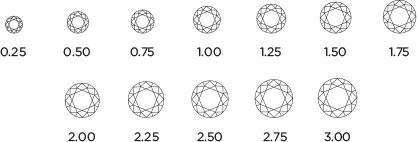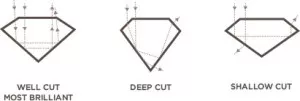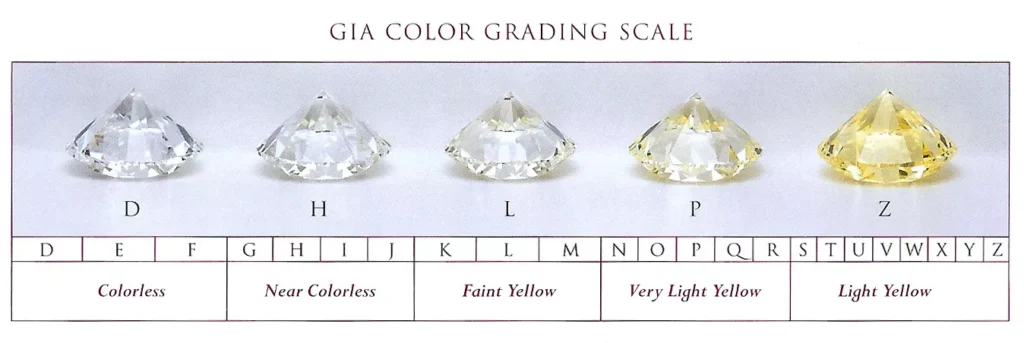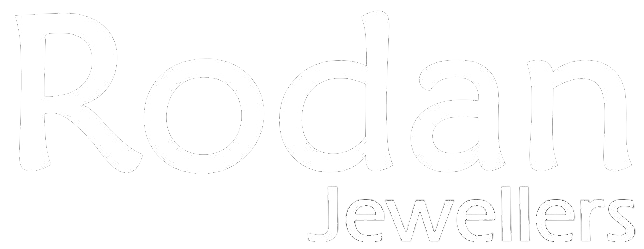The 4 c's of Diamonds
Carats vs Karats
When talking about gold, Karat is spelled with a K.
When talking about diamonds, Carat is spelled with a C.
Karat and Carat have no relationship. We know, it’s confusing isn’t it? But don’t worry, that’s why we’re here! To help clear things up.
Carat Weight
Carat weight alone often does not precisely articulate its size; It is recommended that observing carat weight alongside two other characteristics – the distance across the top of the diamond measured in millimeters and its cut grade – to achieve a better understanding of diamond sizing.
To begin with, the distance across the top of the diamond is an important facet of the process; viewing it from this angle may make it appear larger than it actually is, and it also serves as the vantage point from which we see a stone when setting it into a ring.
Considering this, it is possible to have a diamond of a lower carat weight but a higher cut grade that appears larger than a diamond with a larger carat weight but is of a poor cut grade.
After selecting your cut, color, and clarity grade, it will be easy to find the carat weight of a diamond falling in your price range.

Cut
When a diamond is cut with the proper proportions, light is returned out of the top of the diamond (referred to as the table by gemologists.) If it is cut too shallow, light leaks out of the bottom. Too deep, and it escapes out of the side.

Ideal cut: Represents roughly the top 3% of diamond quality based on cut. Reflects nearly all light that enters the diamond. Exquisite and rare.
Very good cut: Represents roughly the top 15% of diamond quality based on cut. Reflects nearly as much light as the ideal cut, but for a lower price
Good cut: Represents roughly the top 25% of diamond quality based on cut. Reflects most light that enters. Much less expensive than a very good cut.
Fair cut: Represents roughly the top 35% of diamond quality based on cut. Still a quality diamond, but not as brilliant as a good cut.
Poor cut: Diamonds that are generally so deep and narrow or shallow and wide that they lose most of the light out the sides and bottom. Jewelers typically does not carry these.
Colour
A diamond’s colour grade is actually gauged by its lack of colour – with the criteria being how prominent its shade of yellow is; the less colour a diamond has, the higher its colour grade.
A diamond’s colour is generally considered to be the second most important characteristic in the selection process after its cut, since the human eye generally notices a diamond’s sparkle first and its colour second.

Color Grade sheet
D: Absolutely Colourless – the highest grade available, with no detectable colour whatsoever.
F-E: Colourless – any traces of colour are typically only noticeable to expert gemologists.
H-G: Near Colourless – colours are difficult to detect by the naked eye, unless juxtaposed with diamonds of a higher grade.
J-I: Detectable Colour – slightly discernible tone or shade.
M-K: Noticeable Colour – a distinctly yellow hue.
Z-N: Has Colour – an opulent yellow tone.
Clarity
Because these imperfections are usually microscopic, they don’t affect a diamond’s natural beauty in any detectable way. In fact, a diamond’s clarity actually has the least impact on its appearance – and although much is made of it, it is the easiest of the Four C’s to understand(Consider including an image.)

Clarity Grades
FL, IF (Flawless, Internally Flawless): Free of all imperfections, perfect by every measure. Very rare.
VVS1, VVS2 (Very Very Slightly Included, 1 and 2): Imperfections are very difficult to see, even with magnification. Excellent quality.
VS1, VS2 (Very Slightly Included, 1 and 2): Imperfections are somewhat noticeable with magnification, but not at all to the naked eye.
SI1, SI2 (Slightly Included, 1 and 2): Imperfections are clearly evident with magnification and may be visible to the naked eye.
I1, I2,I3 (Included, 1, 2 and 3): Imperfections are visible both when magnified and observed normally.
Create Your Dream Ring
Come in and Meet our Experts
What People Are Saying
Jamie Liu, June 3, 2024
4.9
583 reviews
I decided to go with a custom designed engagement ring at Rodan Jewellers and I am beyond ecstatic about the outcome. They were able to bring my idea to life in such a smooth process. My fiancé and I had such a great experience with the team at Rodan. On our initial consultation we learned so much about their ring making process. The response time for any questions is fast and they are willing to help you with any special requests for your design. The amount of small detail and craftsmanship on the ring is spectacular! I couldn’t be more happy and would highly recommend this place if you would like a custom ring!
